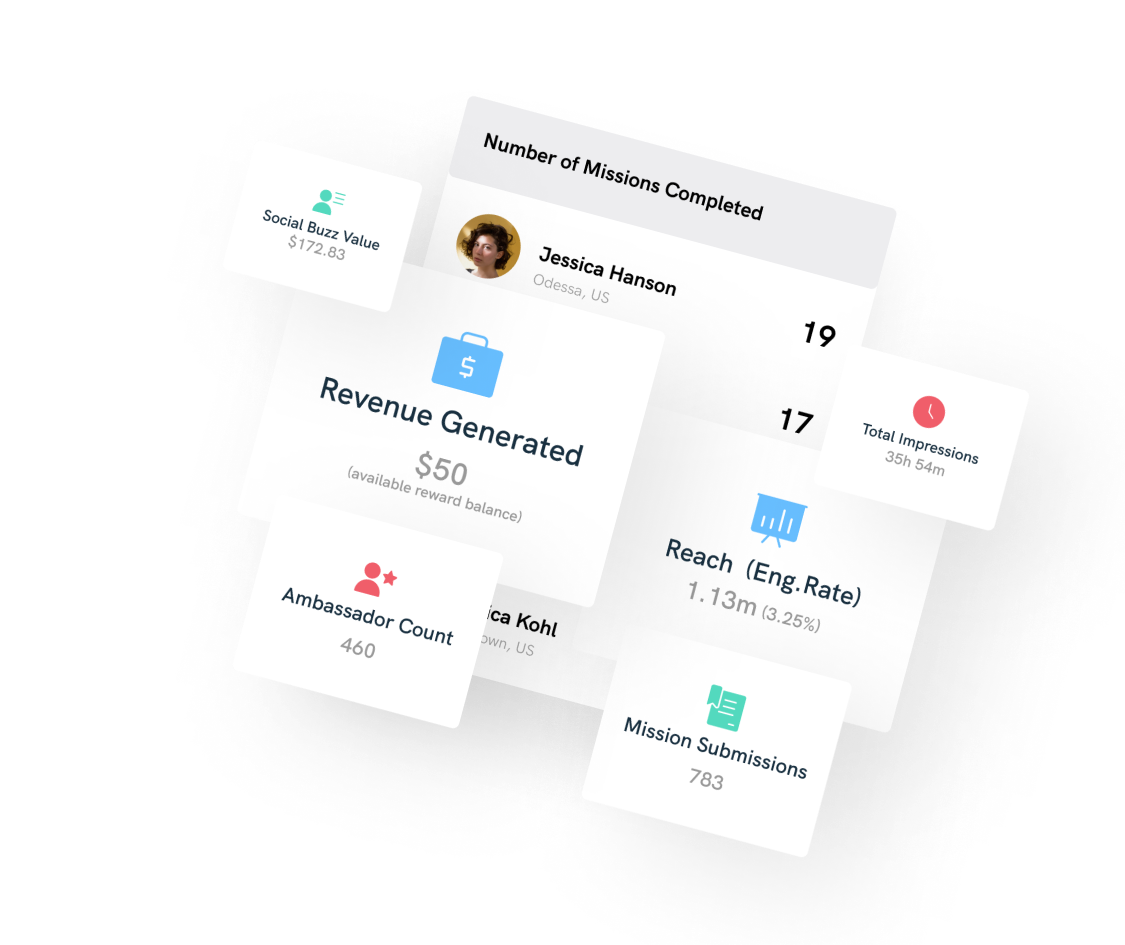This post is your mini-guide, your deep dive into the ocean of influencer conversion rates, leveraging its benefits, and its significance in the game of marketing.
Fear not, there won't be any marketing jargon coming your way to scare you off. So, sit back, sip on your coffee, and let's begin, shall we?
Defining Influencer Conversion Rates
The influencer conversion rate, in simple terms, is a percentage that shows how many people performed a specific action (like buying a product, signing up for a newsletter, etc.) after seeing an influencer's content. It’s crucial for brands to track this as a part of their influencer marketing strategy.
So, if 100 people see an influencer's post about a specific brand, and 10 of them buy that brand's product, the influencer conversion rate is 10%.
In other words, it's an answer to the question, "How effective is this influencer in getting their followers to actually do something besides just consume their content?"
Understanding influencer conversion rates is key for brands to measure the true impact of their partnerships, ensuring they are investing in influencers who drive real action and generate tangible results.
So why is this number important? It's all about efficiency. Businesses and brands are most interested in using their marketing budget where it will have the most impact.
A high influencer conversion rate indicates a high return on investment (ROI) - a key factor when considering an influencer for collaboration.
Factors Influencing the Conversion Rate
Like with any form of marketing, including channel marketing, several factors can influence an influencer's conversion rate. Here are the primary players:
- Follower Engagement: An influencer with a highly engaged audience typically has a higher conversion rate. Engagement refers to interaction from followers, including likes, comments, shares, and saves, among other actions. These interactions show a level of interest and trust in the influencer's content.
- Quality and Relevance of Content: The influencer's conversion rate highly depends on the quality and relevance of their content. If the promoted product/service matches the influencer's normal content and strikes the right cord with their followers, the chances are higher that they can convince followers to take the required action.
- Trust and Credibility: Influencer conversion rates are significantly impacted by how much trust and credibility the influencer holds among their followers. If followers perceive an influencer as genuine and authentic, they are more likely to respond positively to that influencer's endorsements.
- Audience Targeting: The more precise an influencer's target audience, the higher the conversion rate. Niched influencers typically have audiences that are more primed and ready to accept their product recommendations.
- Call-to-Action (CTA): The presence and clarity of a well-crafted CTA can impact conversion rates significantly. If followers know clearly what step they need to take next - be it to purchase a product, sign up for a newsletter, or any other specific action - they are more likely to do it. To make more followers subscribe to your email newsletters, try creating attractive and appealing newsletters. You can take the help of an email newsletter software that lets you create beautiful newsletters effortlessly.
- Influencer's follower size: Although not necessarily always true, sometimes influencers with a smaller, more niche follower base tend to have higher conversion rates. This happens because their audience is often more engaged and loyal, therefore, more likely to heed their recommendations. Check out whether size matters when it comes to influencer marketing.
Methods of Tracking Conversion Rates
Understanding the factors influencing conversion rates is one part of the puzzle. The other is being able to track these rates accurately. By understanding these factors, you can develop a budget for your overall influencer marketing strategy and negotiate fair rates for YouTube influencer campaigns and other campaigns.
Start with the use of promotional codes. Each influencer can be given a unique promotional code, also call discount codes, which their followers can use while purchasing a product or service.
It’s a straightforward and commonly used method; every time a follower uses an influencer’s unique code, it’s counted in the conversion metrics.
Direct affiliate links are another way to track influencer conversion rates. This involves giving influencers a specific URL to share with their audience.
Using tracking software, businesses can record the number of users who clicked on the link and made a purchase.
Another compelling method is UTM parameters, those slightly annoyingly long URLs with added information at the end.
These can track where website traffic is originating from, helping brands to understand which influencers are driving the most traffic and conversions.
On the social media front, Instagram's 'Swipe Up' feature and 'Shopping' tags are excellent tracking tools.
They provide insights on the number of followers who were intrigued enough by an influencer's content to visit a webpage or make a purchase.
And finally, perhaps the simplest and most traditional method: The good old customer survey. While making a purchase, customers can be
Tips to Improve Influencer Conversion Rates
Building a strong relationship with influencers from the get-go is a fantastic place to start. Establish open communication and understand their values and motivations. This will result in more genuine and effective partnerships that reflect in conversion rates.
Don't underestimate the power of well-crafted content. Guiding influencers on the creation of engaging and meaningful content can significantly boost conversions. Touch on storytelling, coming up with creative ways to weave your product or service naturally into the influencer's everyday life.
Call-To-Action or CTAs are a major gateway to conversions. Encourage influencers to be clear about what they want followers to do after consuming the content. Also, it wouldn't hurt to experiment a bit with CTAs to see which ones resonate best with the influencer's audience.
Influencers should always engage their audience in a conversation. This can create a reliable follow-through pathway that leads to conversions. Fostering discussion around a product or service builds excitement and anticipation, boosting the likelihood of followers taking action.
Keep it fresh, and rotate influencers regularly. Even the most effective influencer can become predictable over time, whereas introducing new faces can increase intrigue and conversion potential.
Understand influencer marketing pros and cons before getting started, ou may find that influencer marketing is not the right strategy for you right now.
Last but not least, less can sometimes be more. Rather than casting a wide net and targeting a broad audience, focus on niche influencers whose audiences closely align with your target demographic. This ensures that the people seeing your product or service are the ones most likely to be interested in it, and thus more likely to convert.
Remember, improving conversion rates isn't a sprint; it's more like a marathon. It's about trial, error, learning, and iterating. So don't be discouraged if initial results aren't as high as expected. Stay patient, keep tweaking your strategies, and watch those rates rise.
Wrapping Up
As we've seen, influencer conversion rates are not just some flashy buzzword but a critical metric in making your marketing strategy more effective.
By understanding its nuances, what influences it, how to track it, and strategies to improve it, you are well on your way to making the most of your influencer marketing campaigns.









